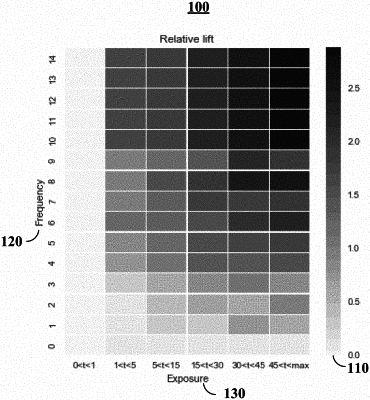| CPC G06Q 30/0246 (2013.01) [G06Q 30/0244 (2013.01)] | 21 Claims |

|
1. A method for presenting content, the method comprising:
receiving, using a hardware processor, a set of users;
extracting, using the hardware processor, impression information including timestamp information, exposure time information, and conversion event information for one or more users in the set of users;
placing, using the hardware processor, a first subset of users into a test group and a second subset of users into a control group, wherein the first subset of users in the test group includes users that received at least one viewable content item on an associated user device and wherein the second subset of users in the control group include remaining users that were not placed in the first subset of users;
determining, using the hardware processor, a plurality of converter users from the test group by generating a mapping of a user identifier for each of the first subset of users with a vendor user identifier, matching extracted impression information with extract conversion event information using the mapping, and selecting the plurality of converter users from the first subset of users in which the extracted impression information of that user matched with extracted conversion event information of that user;
generating, using the hardware processor, a first plurality of temporal distributions based on content viewability information for each of the plurality of converter users, wherein each of the first plurality of temporal distributions is a temporal distribution between exposure to a first content item and a conversion action for the converter user;
determining, using the hardware processor, a plurality of non-converter users that each have one of a second plurality of temporal distributions having similar distribution characteristics to the first plurality of temporal distributions associated with the plurality of converter users;
determining, using the hardware processor, a lift associated with a plurality of content items based on a comparison of a first conversion rate of the plurality of converter users with a second conversion rate of the plurality of non-converter users; and
automatically placing, using the hardware processor, at least a portion of the non-converter users into an exposure profile that causes a modification in presentation of the plurality of content items based on the determined lift.
|